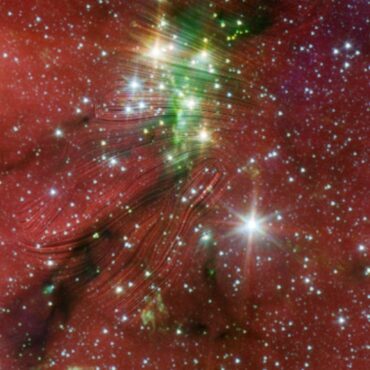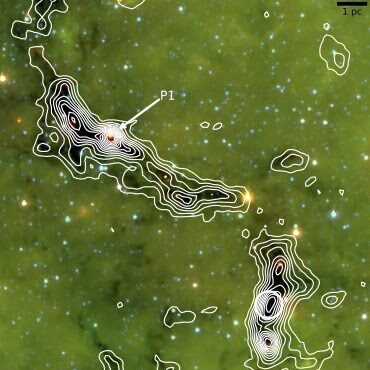
Thushara G.S. Pillai
Research Scientist I am an astrophysicist working on molecular cloud and star formation. I mainly use near-IR to radio wavelength facilities to study the multi-scale physics ISM processes including magnetic fields hat influence star formation. I participate in the developmental activities and science projects using Haystack radio telescopes.CoCoA: A search for high-mass stellar progenitors
Understanding star formation is one of the most fundamental problems in astrophysics. Most of the stars in the Universe form in dense clusters. Low-mass stars, like our own Sun, are much more commonly formed in star clusters. High-mass stars, that are at least eight-times more massive than the Sun, on the other hand, are very rare. High mass stars live a short, but very wild, life characterized by their strong stellar winds, and sometimes a death in supernovae explosions.
I started the CoCoA project to perform a systematic search for the earliest phase of high-mass star formation that builds on the ATLASGAL survey at 870 mu wavelength that covers the entire inner Galactic plane. The clumps extracted for the survey are massive, dense, and devoid of infrared sources up to 70 mu wavelengths. Using sensitive high-resolution ALMA data towards all potential candidate starless high-mass clumps within 5 kpc, CoCoA will reveal if there are any high-mass cores embedded within these clumps. CoCoA will deliver information on the internal density and temperature structure of high-mass cores, and robust constraints on the lifetimes of the elusive early phase of high-mass star formation, at an unprecedented level of detail. I recently received a NSF grant to explore CoCoA.
SIMPLIFI: Study of Interstellar Magnetic Polarization: a Legacy Investigation of FIlaments
The dense molecular filaments in the interstellar medium are highly magnetized. But this observation also poses problems. In order for stars to form stars in filaments, they have to lose these magnetic fields. When and where does this happen?
SIMPLIFI is a NASA/SOFIA pilot legacy project I lead to pursue these questions. How? A small fraction of a molecular cloud’s mass is made up by small dust grains that are mixed into the interstellar gas. Fortunately for us, these interstellar dust grains tend to align perpendicular to the direction of the magnetic field. As a result, the light emitted by these dust grains is polarized — and this polarization can be used to chart the magnetic field directions in molecular clouds. Here is a recent paper I published in Nature Astronomy and a “behind the paper” blog I wrote on this. More information on this project to come soon.

